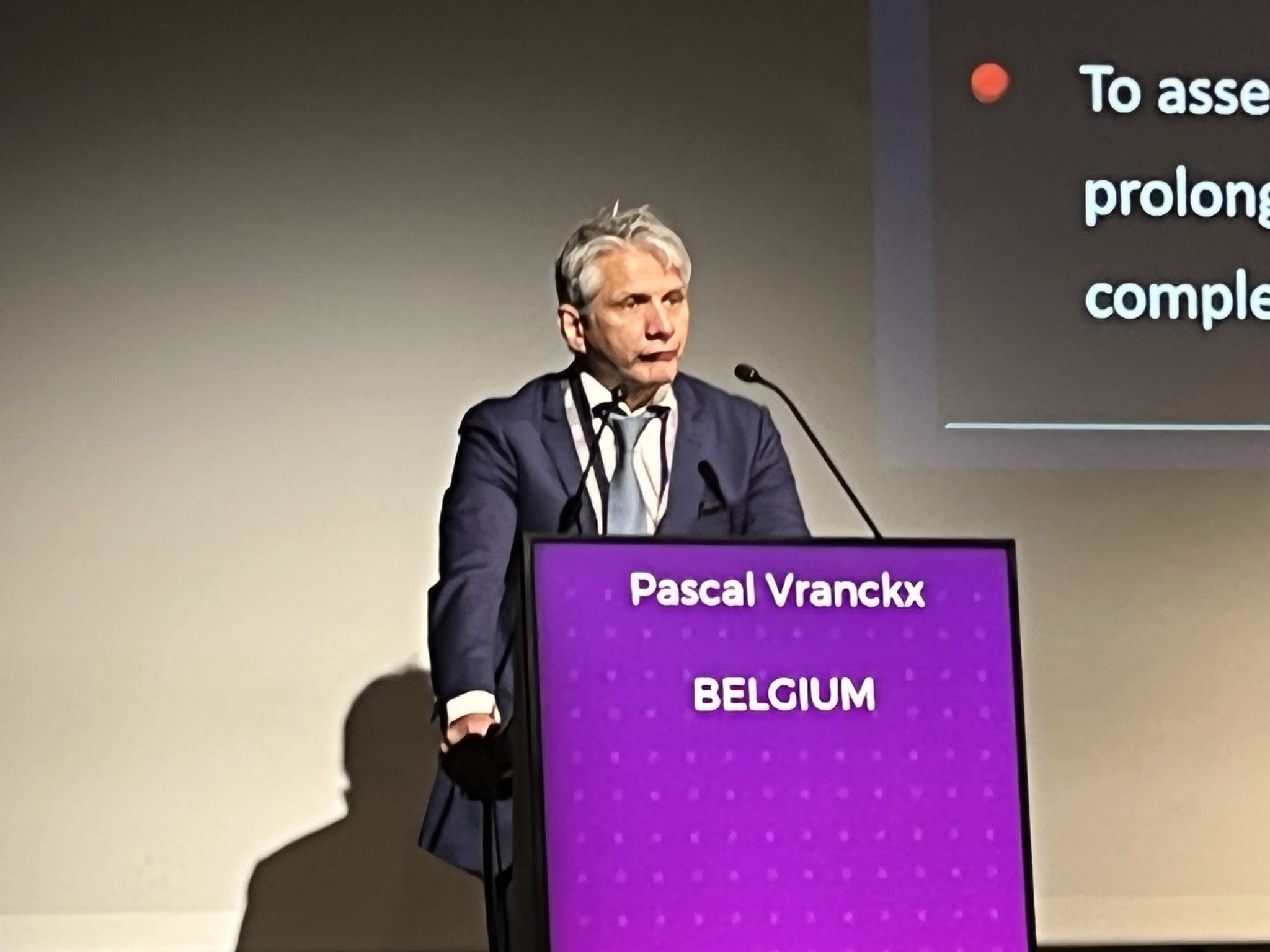 Analysis of the MASTER DAPT trial, presented as a late-breaking trial at EuroPCR 2022 (17–20 May, Paris, France), found that patients undergoing complex percutaneous coronary intervention (PCI) using the Ultimaster (Terumo) biodegradable-polymer, sirolimus-eluting stent saw a lower rate of bleeding after one-month of dual antiplatelet therapy (DAPT), compared to those who had aE longer course of DAPT.
Analysis of the MASTER DAPT trial, presented as a late-breaking trial at EuroPCR 2022 (17–20 May, Paris, France), found that patients undergoing complex percutaneous coronary intervention (PCI) using the Ultimaster (Terumo) biodegradable-polymer, sirolimus-eluting stent saw a lower rate of bleeding after one-month of dual antiplatelet therapy (DAPT), compared to those who had aE longer course of DAPT.
The findings of the analysis were presented by Pascal Vranckx (Hasselt University, Hasselt, Belgium) and simultaneously published in the European Heart Journal.
In his presentation, Vranckx summarised the findings of MASTER DAPT, which were originally presented by Marco Valgimigli (Cardiocentro Ticino Foundation, Lugano, Switzerland) at the European Society of Cardiology’s 2021 congress (ESC 2021, 27–30 August, virtual), and published in the New England Journal of Medicine.
The trial found that in high-bleeding risk patients, after intervention using the Ultimaster stent, one month of DAPT was shown to be non-inferior when compared with more than two months of DAPT for the net and major adverse clinical events, and was superior for reducing major and clinically relevant non-major bleeding.
“We all know that patients undergoing PCI with more advanced coronary artery disease will require more complex procedures and remain at increased risk of short and long-term adverse ischaemic events,” commented Vranckx. “For that reason and against that background, we wanted to assess the consistency of the treatment effects of one-month of DAPT, versus more prolonged DAPT based on PCI and patient complexity.”
For the analysis, high-bleeding risk patients were selected one month after the index procedure. If they were free from ischaemic and bleeding events they were allowed to enter the trial and were treated either with an abbreviated, one-month, DAPT regimen followed by single antiplatelet therapy at the discretion of the operator, versus a more prolonged, “standard” DAPT treatment, lasting at least three months after the index procedure for patients on oral anticoagulation.
Endpoints of the trial were net adverse clinical events (NACE), major adverse cardiac and cerebral events (MACCE), and major or clinically-relevant non-major bleeding events according to BARC classification.
Complex PCI was classified according to criteria including the treatment of three or more vessels, implantation of three or more stents, treatment of three or more lesions, bifurcation with two stents implanted, a total stent length of >60mm, or chronic total occlusion as target lesion. In addition, the investigators also did a sensitivity analysis on a more comprehensive complex PCI definition, including left main stenting and graft stenting.
Baseline, angiographic and procedural characteristics stratified by PCI complexity were well balanced between the two antiplatelet regimens.
Turning to the results, Vranckx detailed that the rate of NACE saw no statistical difference for both and non-complex lesions, with a similar picture for MACCE.
In terms of major or clinically-relevant non-major bleeding, he detailed that the same Kaplan Maier curves appear as were seen in the primary trial, with a difference between abbreviated versus non-abbreviated DAPT between complex and non-complex PCI arms.
“[These are] very consistent findings in this trial, reassuring and mimicking the major trial, as presented in The New England Journal of Medicine,” he said.
However, the findings are couched by some limitations, including that it was an open-label study and randomisation was not stratified based on PCI complexity. He also noted the absence of a universally-accepted definition for complex PCI, and said the results may not apply to patients treated using other stent platforms.
In his concluding remarks, Vranckx told EuroPCR attendees that in patients at high-bleeding risk who had undergone implantation of the Ultimaster sirolimus-eluting stent, regardless of the PCI complexity, the discontinuation of DAPT at a median of 34 days compared with continuation of treatment for a median of 193 days was associated with similar rates of NACE and MACCE, as well as a lower rate of major or clinically-relevant non-major bleeding.













